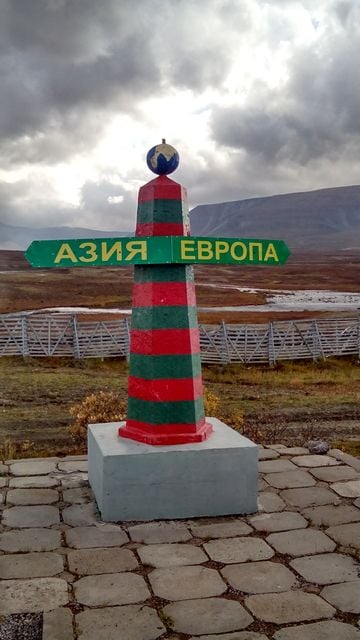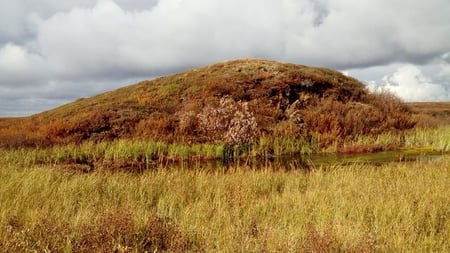In July – September 2016, I was hosted by the Department of Geocryology at Lomonosov Moscow State University, with financial support from the Program for Overseas Visits by Young Researchers within the framework of ArCS project.
In cold regions, frost heaving processes and frost mounds can be observed. The former results to surface swelling associated with ice growth while the latter is generated by ice intrusion/growth under the presence of permafrost that pushes upward the overlying soil. The phenomena have often damaged infrastructure and are therefore, urgent geohazard issues especially for railway and gas companies. The Western Siberia is the most suitable region to study these topics. Therefore, my research during the stay included: (1) literature reviews and testing of equipment, and (2) fieldwork in the Western Siberia, for understanding the relationship between frost heaving processes and subsurface thermal regime in the Western Siberia Plain.
Prior to the fieldwork, I first acquired knowledge on not only frost heaving processes but also methodologies, through prolific discussions with my host professor Dr. Isaev during the first month of the stay. I also had many fruitful chances to visit the Scientific Forest Center of Moscow State University and several laboratories to test and gain skills of various measurements as well as newly-launched equipment.
The most impressive days were the fieldwork in the Western Siberia Plain lasting for 3 – 4 weeks, led by my host professor. I visited Vorkuta area, Polar Ural (Photo 1), and Baydaratskaya Bay (Kara Sea), with scientists, engineers, and students from Moscow State University and Russian Academy of Sciences. The scope of the fieldwork included not only investigation into frost heaving processes and permafrost properties but also understanding of how the phenomena influence railways and gas pipelines. We performed many observations through geothermal, resistivity, acoustic, geodesic measurements, hand-drilling of frozen soil, and 3-D high-resolution mapping. We also discovered a series of pingo-like structures (frost mounds) in the Vorkuta region, which had not been reported (Photo 2)! Overall, the fieldwork was so successful that we could obtain a huge amount of data and many sediment samples.
This study would not have been possible without the support of many people. I highly appreciate Dr. Isaev for his tremendous support, staffs at the International Office of Moscow State University and all participants of fieldwork for their heartwarming hospitality, Gazprom and Russian Railways for assistance of the fieldwork, and ArCS project for generous financial support. The visit also gave me great opportunities to meet many wonderful scientists within the Russian geocryological community. Lastly, I would like to add that I hope further young scientists from wider research fields will have opportunities to co-work in the fieldwork guided by the research group at Lomonosov Moscow State University through the support from ArCS project.
Arata Kioka (The University of Tokyo*)
*Now at Universität Innsbruck

Photo1: Europe-Asia “border” Point

Photo 2: Newly-discovered pingo-like structure in the Vorkuta area




